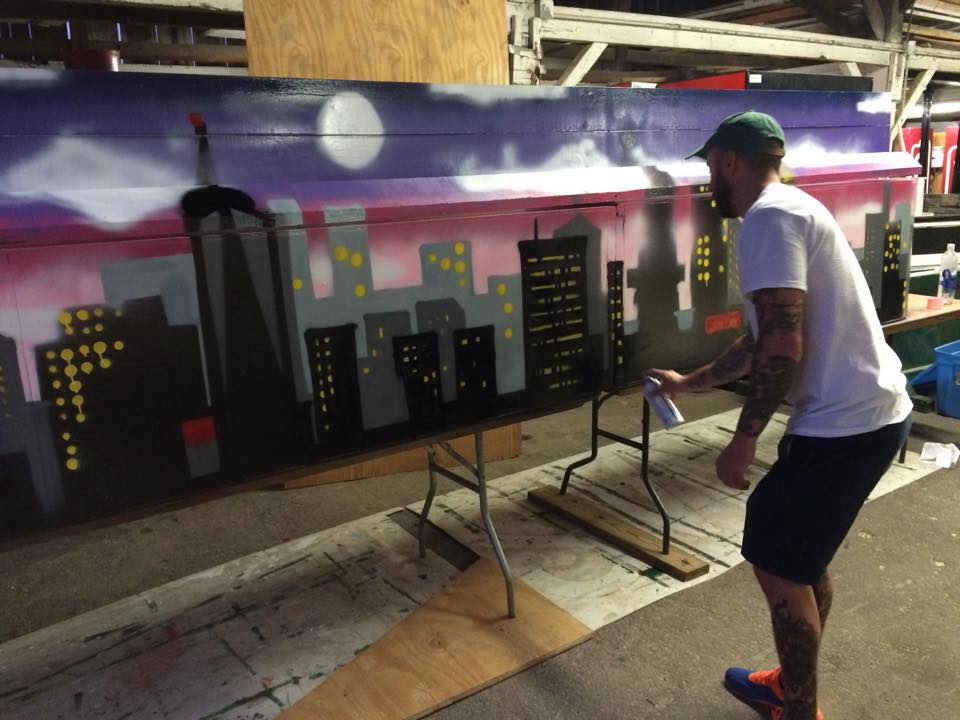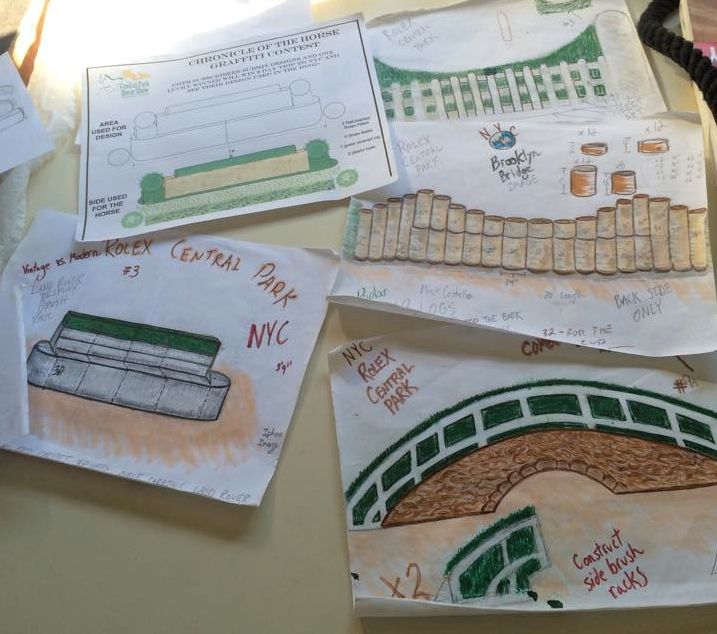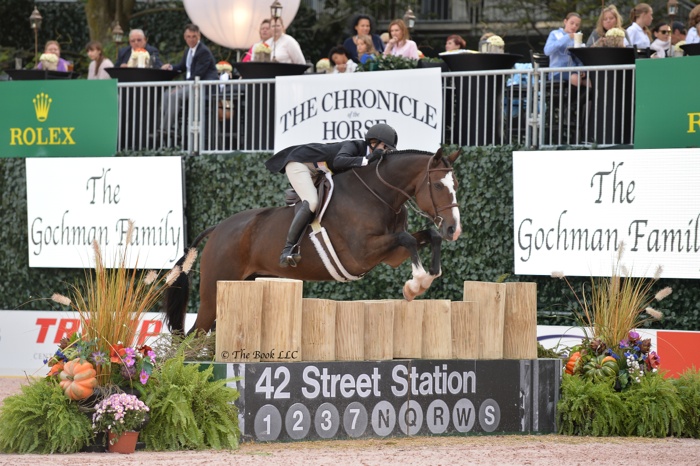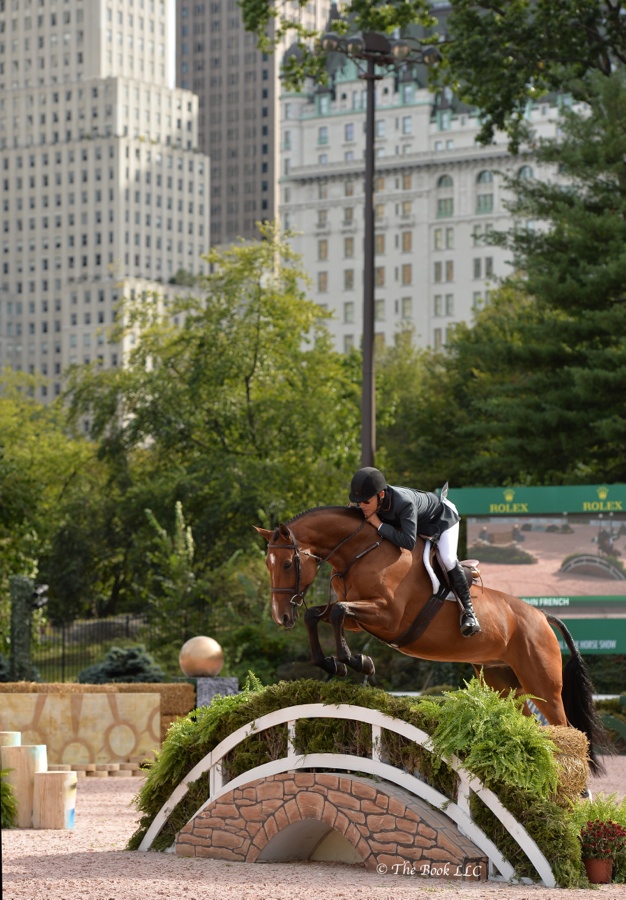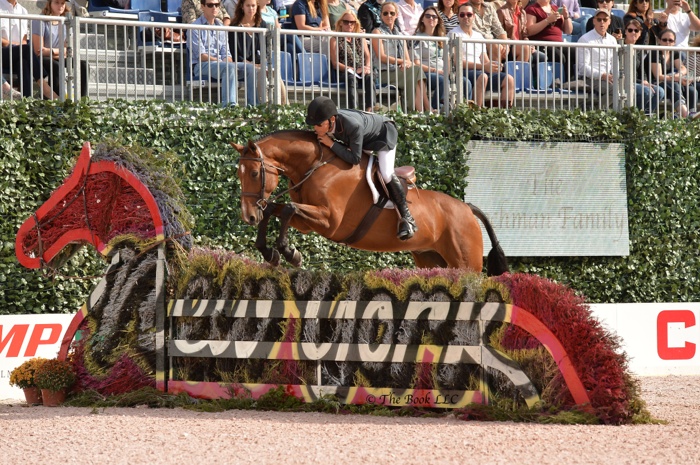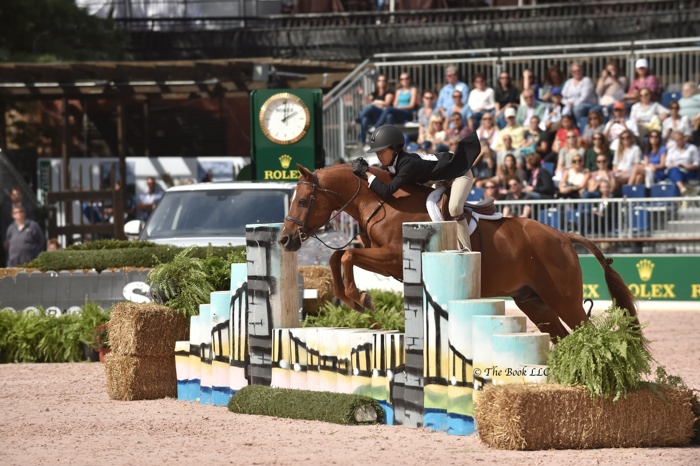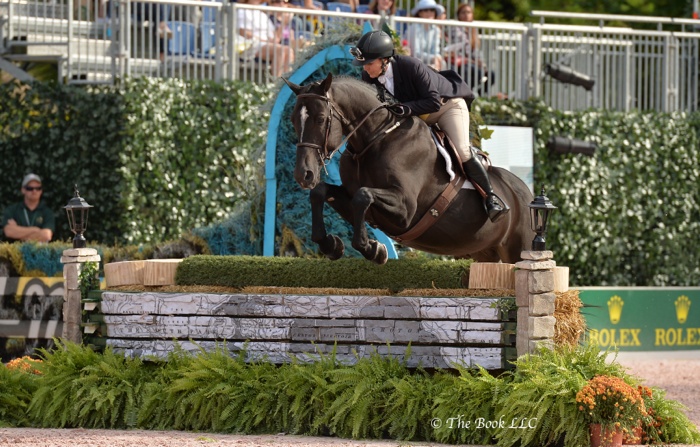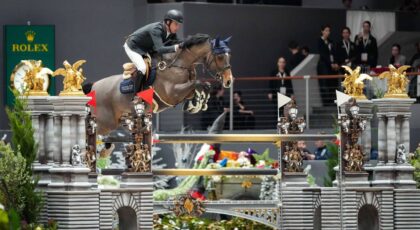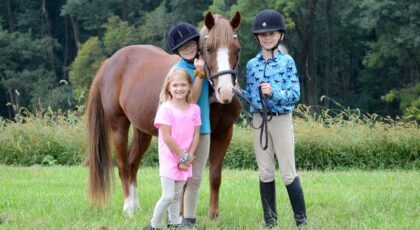Seven years ago, Ian Debeer was one of the most prolific street artists in Pittsburgh. He was no. 2 on the Graffiti Task Force list of “10 Most Wanted Graffiti Vandals” and, in 2008, was arrested on four felony and 69 misdemeanor counts of criminal mischief and graffiti. According to police, he was responsible for $212,100 in damage to city and private property.
On Saturday, Debeer and his spray paint cans were in New York City—tagging jumps at the Central Park Horse Show. This time the urban artist wasn’t getting fined for his work. He was on the payroll.
The unlikely collaboration, brought about by course designer Bobby Murphy, was inspired by a socialite, a photographer and a crisis of health. Hunters made their debut this year at second annual New York show thanks largely to the efforts of amateur rider and New York mainstay Becky Gochman. Murphy was tapped to design the courses. His assignment, from Equestrian Sport Productions’ Michael Stone and Mark Bellissimo: to come up with “something innovative.”
It was an opportunity tailor made for the Kentucky-based designer.
“I think my inspiration started with trying to impress Becky. She’s from New York, so I needed to put a New York twist on the hunters. And from there the concept took off. She gets credit for lighting the fire under me to make the course a true success in the middle of NYC,” said Murphy.
But it was a more personal reason that drove him to go above and beyond.
“My dad had a heart attack earlier this year,” he continued. “It was a bad one. He was in rough shape and it’s been a hard few months. I really wanted to build something in New York that would do him proud, something that hadn’t been done before.”
Hunter courses typically feature fences comprised of gates and rails. Murphy did away with the rails. Instead, he turned each fence into a work of art, commissioning street artists to create custom graffiti and wheat-paste murals. He found Debeer through photographer and fellow artist, Max Collins.
Together, they designed original works of jump-art that depicted different elements of New York’s urban landscape—the subway, the coastline, the Brooklyn Bridge. But only on the back of the fence.
“I designed the front of the jump for the horse and the back for the picture,” explained Murphy. “People come to horse shows for the ribbons and for the pictures to put on their fridge. I wanted to give them something different to put up.”
The end product was the equestrian equivalent of a gallery show—the course, his commentary on the urbanization of the hunter industry.
“I spent more time on this course than any other I’ve done,” confessed Murphy. “I researched art and design, every piece was thought out. I wanted to pay tribute to the tradition of the sport, but also to the location. With the setting in New York’s Central Park, there was no reason to go the other way. I wanted to open up the design.”
The risk paid off. Saturday’s US Open $50,000 Duchossios Cup rode to a packed house. And, like a gallery show, they were making changes to it up until the pony class started the evening’s entertainment.
“Right at the last second, we’re getting the course ready for the ponies, it’s chaos, and Mark Bellissimo says, ‘We need music. Get the pony kids to pick a song and we’ll play it as they enter the ring,’” recalled Murphy. The class was dubbed “Freestyle Hunters.”
“I was lukewarm on the idea at first,’ he admitted. “I didn’t want to jeopardize all the work we’d put in on the jumps leading up to the class. We were already taking a risk with the art. But we did it. It was so exciting! People were taking pictures. They were singing to the music. The kids were riding with the biggest smiles on their faces. The experienced is untouched by anything I’ve seen from the hunters.”
For Murphy, who resigned from his longstanding post as course designer for the USHJA International Hunter Derby in 2011, it was confirmation that the industry is receptive to change.
“It takes a big production to do this, with money behind them. Art is not cheap. You need people who are willing to pay for it,” he said. “The Derby turned into another thing that came down to money. With Mark and Michael, it wasn’t about money. It was about promoting the sport. If it cost $7,000 dollars to do some jumps, they were going to do it. A lot of shows just want their nine rails and gates. The industry is moving past that.”
Where it heads next is only a commission away. Graffiti is just the beginning of Murphy’s pioneering plans.
“Next year, maybe we’ll have the public create jumps. Or have different artists designing each one and we auction them off before the class. There are so many ways we can continue to innovate the hunters,” he enthused.
For now, the jumps are heading back to Kentucky with Murphy where they’ll no doubt inspire him to continue redefining the boundaries of show hunters. (He plans to jump them with the help of his sister.)
“What Central Park did for hunters, it achieved the original mission statement of the Hunter Derby. It was spectator friendly. It promoted the hunter industry. And it did it in one day,” he said. “This is just the beginning.”
As for his father, Murphy senior was in New York to witness his son’s history-making course.
“Dad was amazed by it—him and my mom both. I was really happy they were here. It was emotional,” said Murphy. “A tear came out of my eye as I walked to work on 58th Street that day.”
Special thanks to the ever generous James Parker for his spectacular images! Check out his site, The Book LLC, for more stunning photos of The Central Park Horse Show and every other can’t miss event of the year.




 October 1, 2015
October 1, 2015 
